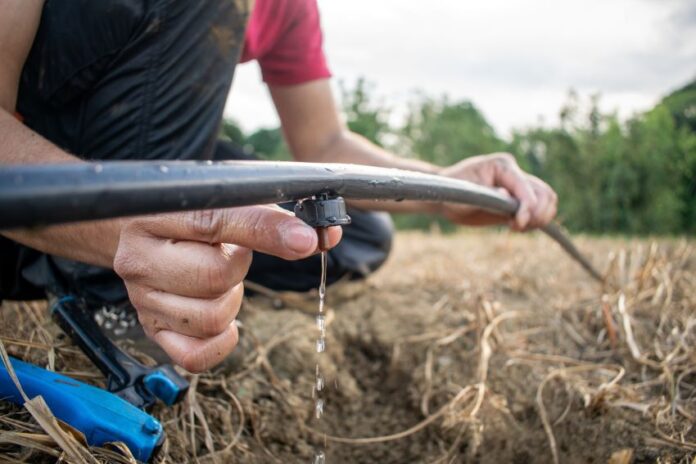Mexico’s agriculture sector accounts for the vast majority of the country’s water consumption, yet over half of it is lost due to inefficiencies in water use. Overconsumption, inefficient irrigation practices, aquifer overexploitation and the impacts of climate change drive the growing water crisis. Sustainable water management is now critical to securing the country’s food and water future.
Water availability and distribution: The startling statistics
Agriculture consumes roughly 76% of Mexico’s water resources, yet much of this is lost due to poor infrastructure and outdated irrigation practices.

Mexico uses 461,640 million cubic meters of renewable water per year. However, water availability is unevenly distributed. The north, central and northwest areas of the country — where most people and industries are concentrated — have far less renewable water than the southeast. This disparity presents challenges for agricultural planning and equitable access to water.
Agriculture relies on a combination of surface water (64%) and groundwater (36%). Irrigation infrastructure includes:
- 6,500 storage dams and reservoirs
- 6.7 million hectares of irrigated farmland
- 2.8 million hectares of technified rain-fed agriculture
Despite this, studies estimate 40% to 65% of agricultural water is lost due to leaks, poor irrigation and evaporation.
Export agriculture and the water footprint
The sheer volume of water consumed by Mexican agriculture is driven by powerful economic forces, particularly the demand for high-value export crops in the United States and global markets.
A significant amount of water is used to irrigate highly water-intensive crops tied to the boom in fresh produce exports. Avocados, blueberries, and asparagus — all of which require a lot of water — generate substantial revenue but place immense stress on local water reserves, particularly in high-stress states like Jalisco and Michoacán.
Livestock also drains the water supply. Growing alfalfa and other fodder crops to support Mexico’s massive cattle industry consumes vast amounts of water, often relying entirely on depleted groundwater sources.
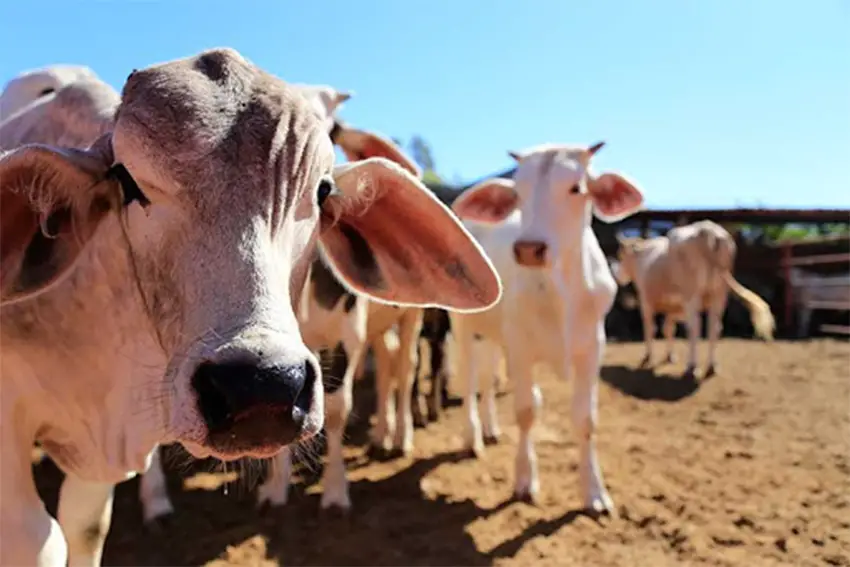
This dynamic creates an ethical and resource conflict: national water reserves are leveraged to grow profitable goods for international consumption, while local smallholder farmers and domestic food security are increasingly marginalized due to declining water tables.
Overexploitation and climate change: A perfect storm
The current dire situation is a combination of high water consumption, high waste and environmental limits, particularly in the northern and central arid and semi-arid regions.
Overexploitation of aquifers
Mexico relies heavily on groundwater for irrigation, with estimates indicating that about one-third of its irrigated land is supplied by aquifers. Of the country’s 653 officially recognised aquifers, many are being extracted unsustainably, and as of 2023, 115 are classified as overexploited, leading to declining water tables, higher pumping costs, salinization and seawater intrusion. Overexploitation is particularly severe in the arid northern and central regions, where groundwater is essential for irrigation during droughts.
Climate pressures
Climate change is intensifying the water scarcity in agriculture. Projections indicate:
- Temperature increases of 0.5 degrees Celsius to 5 degrees Celsius across the country by the end of the century.
- Rainfall declines of up to 20.3% in some regions.
- More frequent and severe droughts, particularly in arid and semi-arid areas.
These shifts could reduce yields of key crops such as corn and sorghum by more than 40% in rain-fed regions under high-emissions scenarios.
Water and social conflict: The struggle for equity
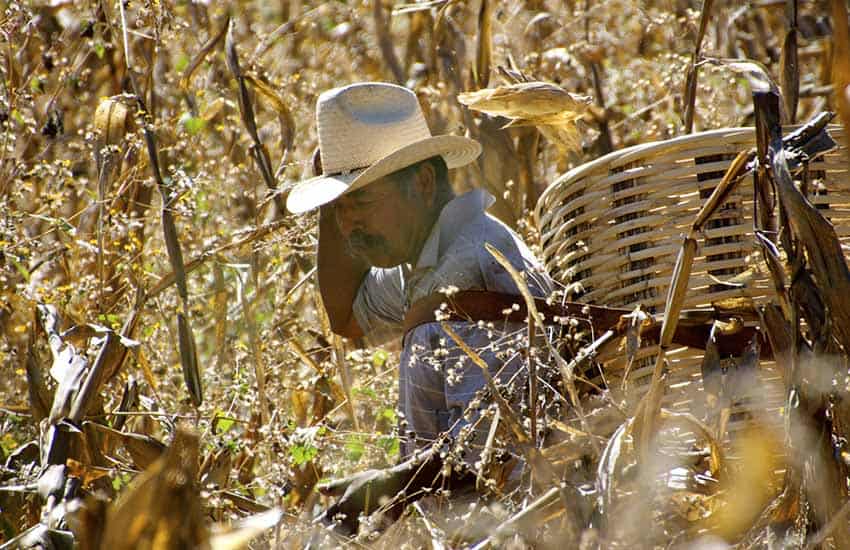
The water crisis is bigger than it seems; it has become a deep-seated social conflict over who gets access to a dwindling resource.
There is a disproportionate impact on smallholders. Overexploitation primarily impacts small rural producers who rely on shallow wells and cannot afford the high pumping costs or technological investments necessary to access deeper water or implement drip irrigation. When water tables drop, these vulnerable farmers are often the first to lose their livelihoods, accelerating rural poverty and migration.
To make this worse, government programs aimed at recovering water often reallocate it to urban centers, generating resistance from rural communities, who frequently feel left out of the picture.
Government initiatives for sustainable water management
Recognizing the gravity of the situation, the Mexican government has initiated several programs to address agricultural water inefficiency.
National Irrigation Modernization Program
The National Irrigation Modernization Program aims to technologically improve over 200,000 hectares of irrigated land and assist 225,000 agricultural producers. Its goals include:
- Lining and piping canals, installing flow meters and automating gates to recover up to 40% of lost water.
- Adoption of drip, micro-sprinkler and sprinkler systems, which can reduce water use by up to 60% compared with flood irrigation
- Minimizing runoff and maximizing irrigation efficiency.
The recovered water is reallocated to urban centers and aquifer recharge, especially targeting drought-prone areas like Sinaloa, Hidalgo and Coahuila-Durango.
Proposed water law reform
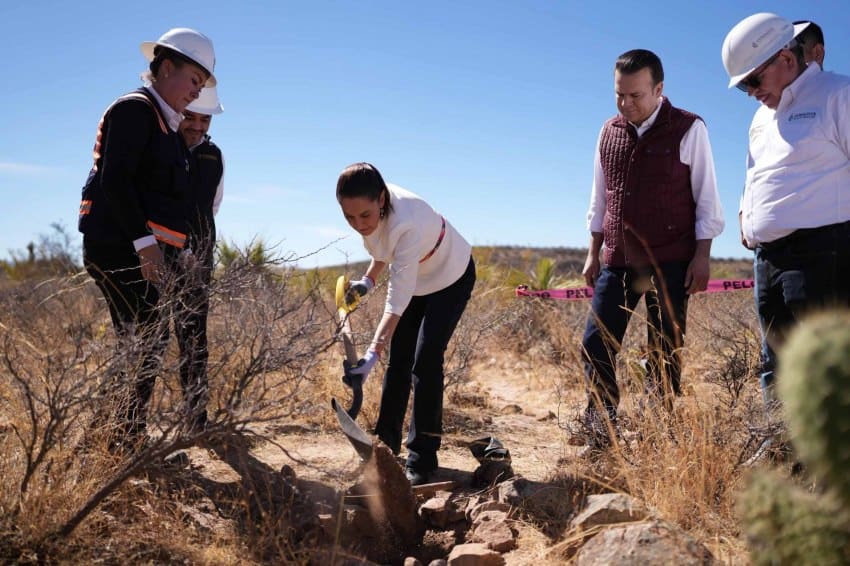
The government’s General Water Law reform emphasises sustainable management, state oversight and equitable access. Key provisions include:
- Farmers retain existing water rights.
- Incentives for efficient irrigation technologies (PEUA program).
- Prevention of illegal water trading and hoarding.
- Promotion of water reuse and aquifer recharge.
- Creation of a National Water Registry and Reserve Fund.
- Penalties for misuse while protecting compliant users.
- Strategic planning for short-, medium-, and long-term water allocation.
Enforcement barriers to change
Despite efforts to modernize, water waste in Mexico remains a significant problem due to political and structural barriers. The government heavily subsidizes electricity for pumping groundwater, making it cheap for large farmers and removing any incentive to save water or use efficient technology. Most of these benefits go to a small group of wealthy farmers. Powerful farming lobbies block reforms, like water meters and fair pricing.
CONAGUA also struggles to enforce the rules due to a lack of funding and political support. As a result, many break the law, illegal wells are common, and water is diverted without permission, making conservation efforts largely ineffective.
On-Farm strategies for water security
Beyond federal change, sustainable water management requires integrated, farm-level approaches.
Technological solutions
Digital technologies are transforming water management. Earth Observation (EO) data from satellites enables the monitoring of drought and water allocation in irrigation districts. Data-driven systems, such as CARLOTA, utilise real-time analytics to help farmers reduce their water usage by approximately 20%.
Agronomic innovations
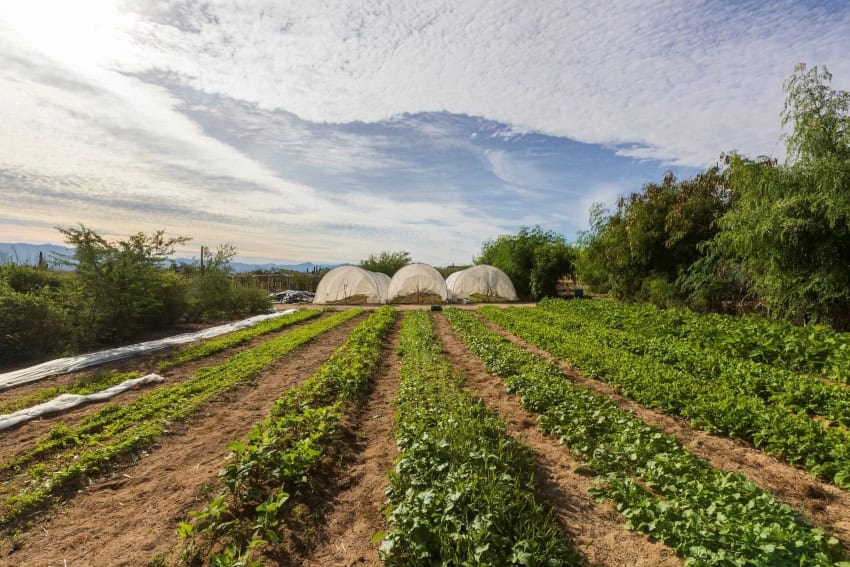
Conservation and regenerative farming are set to come to the fore. No-till farming, drought-tolerant crops, and adjusted planting calendars reduce water demand and improve soil health. Wastewater upcycling will also allow aquatic plants, such as Lemna, to treat agricultural wastewater and recover nutrients for reuse.
This wastewater recovery will be supplemented by rainwater harvesting. Systems that capture and purifiy local rainfall to supplement irrigation and reduce pressure on centralised water systems.
Collaboration: Everyone’s role in water security
Sustainable water management requires shared responsibility among government, farmers and industry. Key strategies include:
- Volumetric measurement: Mandatory metering to prevent over-extraction, especially from aquifers.
- Empowering user associations: Strengthening irrigation districts to manage infrastructure and enforce sustainable practices.
- Integrated policy: Coordinating agricultural, environmental and social priorities under a unified framework.
- Capacity building: Training farmers and local technicians in efficient irrigation and climate-resilient practices.
Mexico’s water challenge sits at the crossroads of climate change, agricultural productivity and social equity. Long-term water security will depend on sustained commitment to efficiency, innovation and integrated governance that ensures every drop counts — for farms, urban areas and the environment alike.
Irena Vélez is a journalist at Wikifarmer.com, based in Seville, Spain. She holds a Bachelor’s in Journalism Honours from Carleton University in Ottawa, Canada, and has a background in agricultural reporting. She writes research-based articles on sustainable farming, crop management and rural entrepreneurship, helping make agricultural knowledge accessible to farmers worldwide.
For readers looking to dive deeper into the protected agriculture sector, Wikifarmer offers expert insights, market data, and crop trends. Wikifarmer empowers farmers, agribusiness professionals, and industry observers through four key pillars: the Wikifarmer Marketplace, connecting producers with buyers around the world; the Wikifarmer Library, a free knowledge hub with thousands of expert-authored articles on crops, technologies and best practices; the Wikifarmer Academy, offering online courses with certifications to enhance agricultural skills; and Wikifarmer Price Insights, providing real-time market intelligence on key commodities. By combining practical expertise with up-to-date data, Wikifarmer helps stakeholders navigate the complexities of modern agriculture, making it an essential resource for anyone interested in Mexico’s booming greenhouse and horticulture industry.
